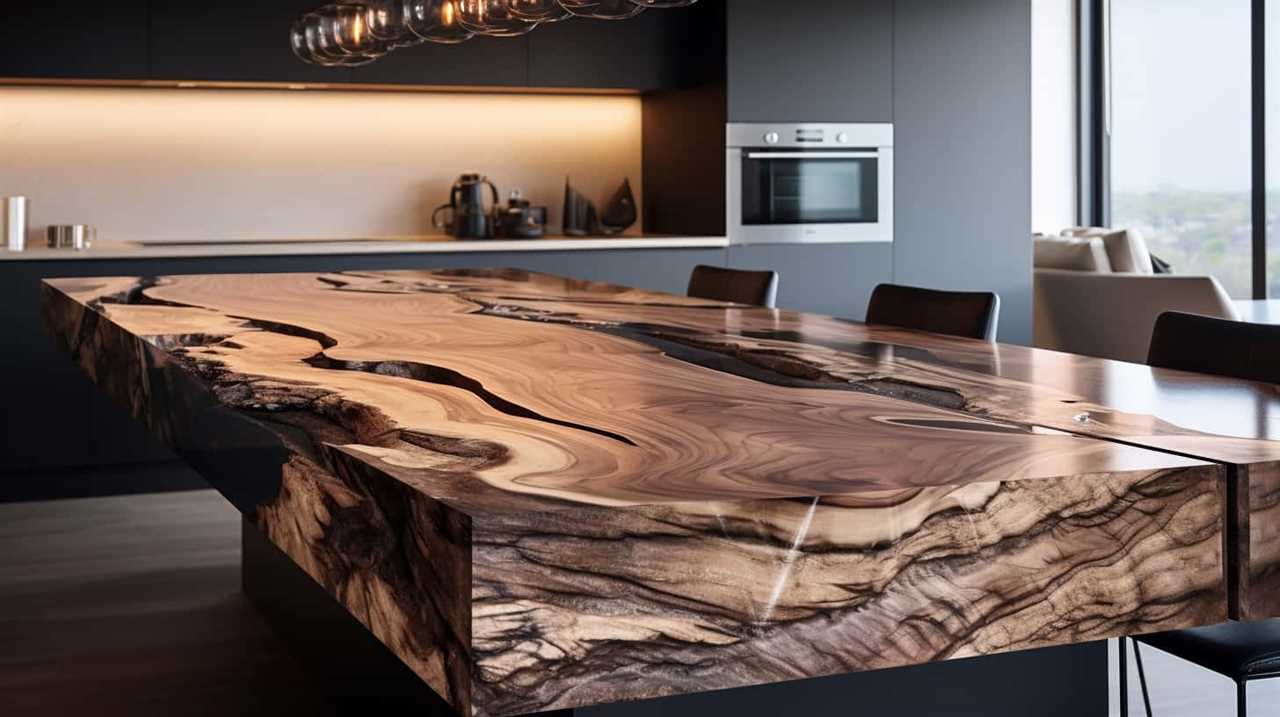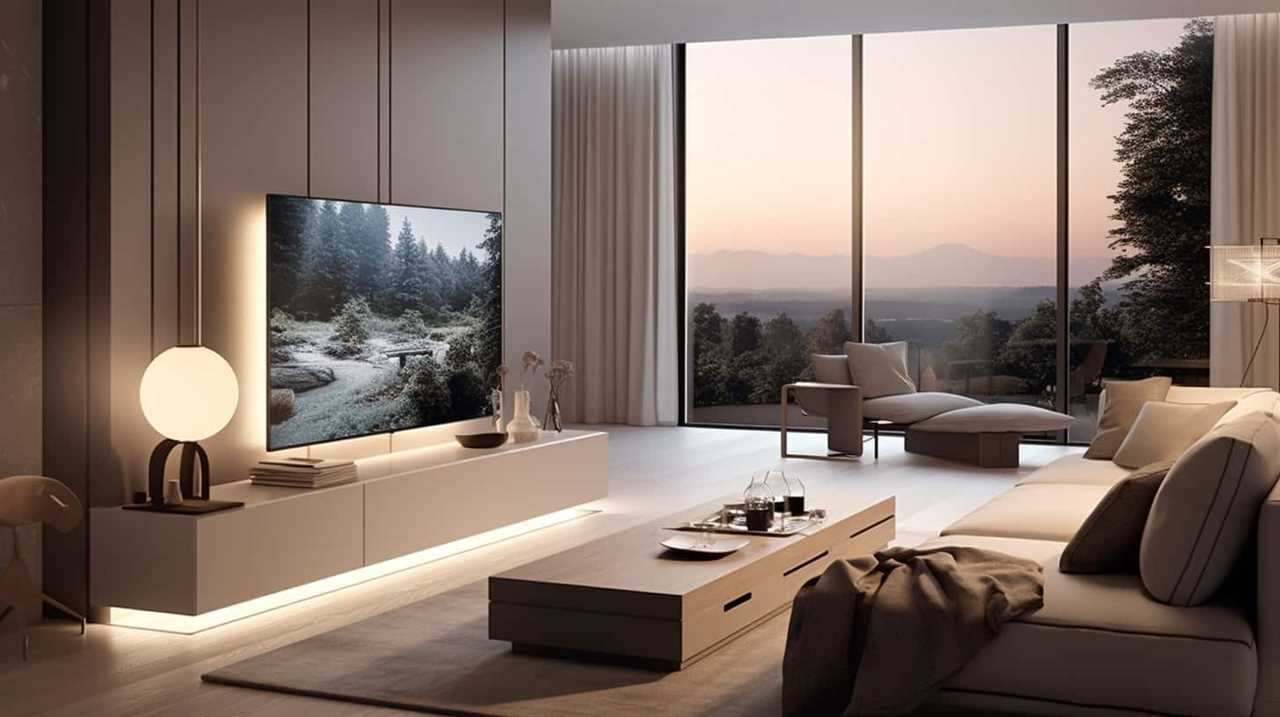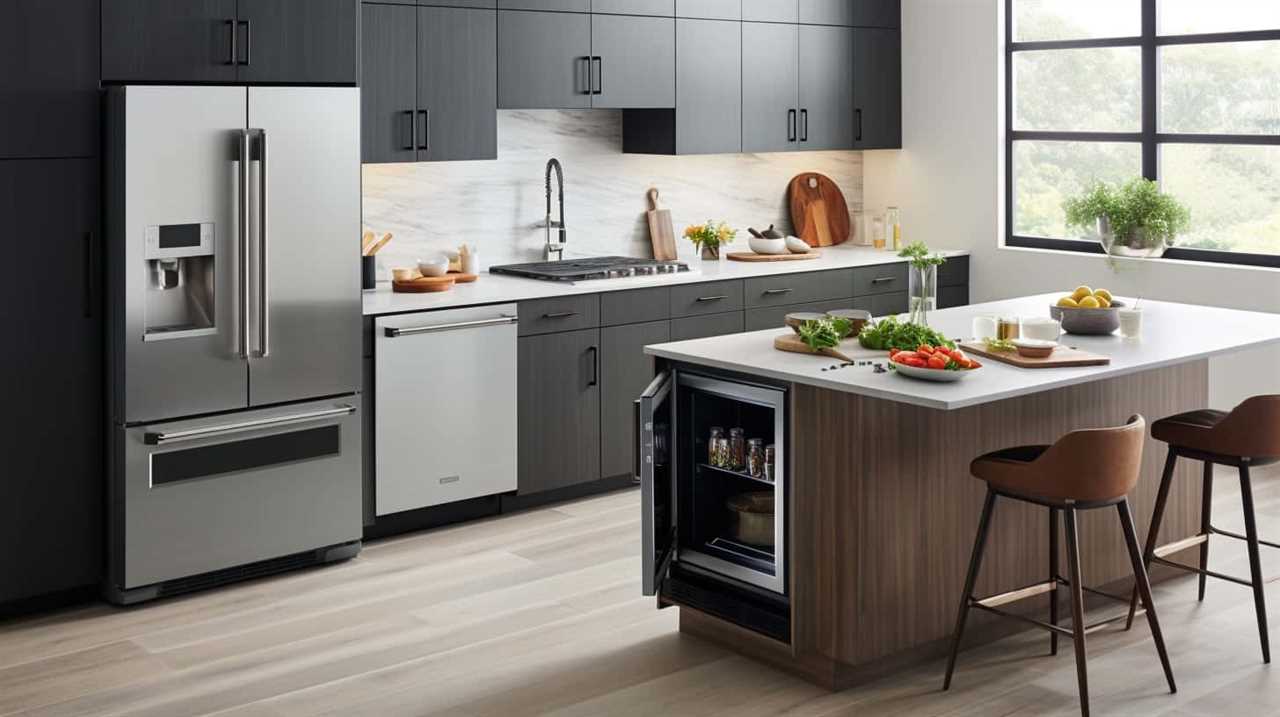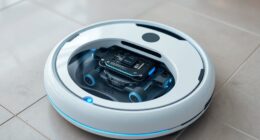Ever pondered whether appliances consume electricity when plugged in? The answer is yes, they do.
In this article, we will explore the concept of standby mode, vampire power, and the myth of energy-saving mode.
We’ll shed light on the phenomenon of phantom load and discuss which appliances continue to use energy even when seemingly turned off.
Join us as we delve into the impact of plugged-in chargers and discover tips to minimize energy usage from our appliances.

Let’s master the art of efficient energy consumption together.
Key Takeaways
- Standby mode and energy-saving mode still consume electricity even when appliances are not in active use.
- Unplugging appliances and using power strips with on/off switches can reduce standby power consumption and vampire power.
- Phantom load can account for up to 10% of a household’s energy consumption.
- Awareness of plugged-in chargers and their environmental implications, such as energy wastage and e-waste generation, is important.
Standby Mode: Energy Consumption Explained
Standby mode significantly contributes to energy consumption.
While standby mode may seem like a convenient feature that allows appliances to be ready for immediate use, it actually consumes a significant amount of energy. This is because appliances in standby mode continue to draw power from the electrical grid, even when not in use.
However, it’s important to note that standby mode does have its energy saving benefits. By reducing standby power consumption, we can effectively reduce our overall energy usage and lower our electricity bills.

To achieve this, it’s advisable to unplug appliances when not in use or utilize power strips with on/off switches to easily cut off power supply to multiple devices.
Vampire Power: The Hidden Energy Drain
While standby mode may contribute to energy consumption, there’s another hidden energy drain that occurs when appliances are plugged in but not in use, known as vampire power. Vampire power refers to the electricity that continues to be drawn by appliances even when they’re turned off or in standby mode.
This phenomenon is caused by devices that have power supplies or chargers that remain plugged in and continue to draw small amounts of electricity. Examples include televisions, computers, game consoles, and phone chargers.
Vampire power awareness is crucial for reducing standby energy and minimizing unnecessary electricity usage. By unplugging devices when not in use or using power strips with on/off switches, individuals can effectively reduce vampire power and save energy.

Transitioning into the subsequent section about the myth of energy-saving mode, let’s explore whether this feature truly helps conserve electricity.
The Myth of Energy Saving Mode
We’ve all heard about the energy-saving mode on appliances, but does it really cut down on electricity usage when they’re plugged in?
It’s time to debunk the myth of energy-saving devices and their claims of reducing power consumption. While it may seem logical that putting appliances in energy-saving mode would result in lower electricity usage, the reality isn’t that simple.
Energy-saving mode typically reduces power consumption by adjusting certain features or functions of the appliance, such as brightness or processing speed. However, even in this mode, appliances still draw a certain amount of power to remain operational.

Therefore, while energy-saving mode may result in some energy savings, it’s important to remember that appliances plugged in will still use electricity, albeit in a reduced amount.
Understanding Phantom Load
To better comprehend the concept of phantom load, let’s delve into its definition and how it affects electricity consumption.
Phantom load, also known as standby power or vampire power, refers to the energy consumed by electronic devices even when they’re turned off or in standby mode. This happens because these devices still draw a small amount of power to maintain certain functions such as remote control readiness or clock display.
It’s estimated that phantom load can account for up to 10% of a household’s energy consumption. Increasing phantom load awareness is crucial in reducing standby energy and minimizing electricity wastage. By unplugging devices when not in use or using power strips with on/off switches, we can significantly reduce phantom load and save energy.

Now, let’s explore the next section about appliances that continue to use energy even when turned off.
Appliances That Continue to Use Energy
How can appliances that are plugged in still use electricity even when they’re turned off? It’s a common question that many people have. The answer lies in something called standby power, also known as phantom load. Standby power is the electricity consumed by appliances and devices when they aren’t in active use but are still plugged in.
Here are three important things to know about appliances that continue to use energy:
- Standby power can account for a significant portion of your electricity bill.
- Some appliances, like televisions and game consoles, consume a higher amount of standby power compared to others.
- Energy-saving tips, such as using power strips with an on/off switch or unplugging appliances when not in use, can help reduce standby power consumption.
Understanding how appliances use electricity even when turned off is the first step towards making more informed decisions about energy consumption.

Unplugging Vs. Power Strips: Which Is More Effective
Now let’s delve into the effectiveness of unplugging appliances versus using power strips. When it comes to saving energy and reducing electricity usage, both methods have their advantages. Unplugging appliances completely eliminates any standby power consumption, ensuring that no energy is wasted. On the other hand, using power strips offers convenience and allows multiple devices to be turned off with just one switch. To help you understand the benefits and advantages of each method, here is a comparison table:
| Unplugging Benefits | Power Strip Advantages |
|---|---|
| Eliminates standby power consumption | Convenient for multiple devices |
| Ensures no energy is wasted | One switch turns off multiple devices |
| Simple and cost-effective solution | Provides surge protection for electronics |
| Requires effort to unplug and plug appliances | Reduces clutter and cable mess |
| Ideal for rarely used appliances | Suitable for frequently used devices |
As you can see, both unplugging appliances and using power strips have their own set of advantages. However, it ultimately depends on your specific needs and preferences. Now, let’s move on to discussing the impact of plugged-in chargers.
The Impact of Plugged-in Chargers
Plugged-in chargers contribute to energy wastage, which has significant environmental implications. When chargers are left plugged in even when not in use, they continue to draw power, known as vampire power or standby power consumption.
This can result in unnecessary energy consumption and increased electricity bills.

Energy Wastage From Chargers
We have observed a significant amount of energy wastage from plugged-in chargers. This wastage occurs due to the inefficiency of chargers in converting electricity into usable power.
Here are three key points to consider:
- Charger efficiency: Many chargers continue to draw power even when they aren’t actively charging a device. This idle power consumption can contribute to energy wastage over time.
- Vampire power: Some chargers consume energy even when they aren’t connected to a device. This phenomenon, known as vampire power or standby power, can account for a significant portion of energy wastage.
- Unplugging chargers: Simply unplugging chargers when they aren’t in use can help reduce energy wastage. This small action can have a meaningful impact on overall energy consumption.
Understanding the impact of plugged-in chargers and taking steps to minimize energy wastage is crucial for maximizing charger efficiency and reducing our carbon footprint.
Environmental Implications of Chargers
As we continue our discussion on the energy wastage from chargers, it is important to consider the environmental implications of having appliances plugged in. The impact of plugged-in chargers goes beyond just the electricity they consume. It affects our environment and calls for sustainable practices. Let’s take a closer look at the environmental impact of chargers:

| Environmental Impact | Sustainable Practices |
|---|---|
| Energy consumption | Unplug chargers when not in use |
| E-waste generation | Recycle old chargers |
| Carbon footprint | Use energy-efficient chargers |
By understanding the environmental consequences of having appliances plugged in, we can make informed decisions and adopt sustainable practices to minimize our impact. Now, let’s delve into the next section, where we will explore the benefits of energy efficiency and smart home technology.
Incorporating energy efficiency and smart home technology can further enhance our efforts towards minimizing energy wastage and reducing our carbon footprint.
Energy Efficiency and Smart Home Technology
When it comes to energy efficiency and smart home technology, there are several benefits to consider.
Smart technology allows homeowners to monitor and control their energy usage, optimizing efficiency and reducing waste.

Additionally, energy-saving home appliances are designed to consume less electricity while still providing the same level of functionality, helping to lower utility bills and minimize environmental impact.
Benefits of Smart Technology
One of the key benefits of smart technology is the significant reduction in energy consumption. With the advancements in smart home automation and energy management systems, homeowners can now have better control over their energy usage.
Here are some of the benefits of smart technology:
- Energy efficiency: Smart technology allows for the optimization of energy usage in the home. It can automatically adjust lighting, heating, and cooling systems based on occupancy and preferences, resulting in lower energy bills.
- Smart appliances: Smart appliances, such as refrigerators and washing machines, can communicate with energy management systems to optimize their energy usage. They can run during off-peak hours when electricity rates are lower, reducing overall energy consumption.
- Remote monitoring and control: Smart technology enables homeowners to remotely monitor and control their energy usage. Through smartphone apps or web interfaces, users can easily track their energy consumption and make adjustments to optimize efficiency.
Energy-Saving Home Appliances
We can further enhance energy efficiency and smart home technology by looking at energy-saving home appliances. These appliances are designed to minimize energy consumption and reduce utility costs. Two key areas where energy-saving appliances make a significant impact are lighting and water consumption. Energy efficient lighting options, such as LED bulbs, use up to 80% less energy than traditional incandescent bulbs. This not only reduces electricity usage but also extends the lifespan of the bulbs. Additionally, appliances that are designed to reduce water consumption, like low-flow faucets and showerheads, help conserve water resources and lower water bills. By investing in energy-saving home appliances, homeowners can create a more sustainable and cost-effective living environment.

| Energy-Saving Home Appliances | Benefits |
|---|---|
| LED lighting | Energy efficient, longer lifespan |
| Low-flow faucets and showerheads | Reduced water consumption, lower bills |
Tips to Minimize Energy Usage From Plugged-In Appliances
To cut down on energy consumption from plugged-in appliances, let’s unplug devices when they aren’t in use. This simple act can significantly reduce standby power consumption and save energy.
Here are some tips to minimize energy usage from plugged-in appliances:
- Utilize energy-efficient cooking techniques: Opt for cooking methods that consume less energy, such as using the microwave instead of the oven or using a pressure cooker for faster cooking times.
- Unplug chargers and power adapters: Even when not in use, chargers and power adapters continue to draw small amounts of energy. Unplugging them when not in use can help reduce standby power consumption.
- Utilize power strips with switches: Power strips with switches allow you to easily turn off multiple devices at once, preventing them from consuming energy when not in use.
Frequently Asked Questions
How Can I Determine if an Appliance Is Using Electricity While in Standby Mode?
To determine if an appliance uses electricity in standby mode, we can measure its energy consumption. By using devices such as power meters or smart plugs, we can accurately determine the standby power of appliances.
Are All Appliances Susceptible to Vampire Power, or Are There Certain Types That Are More Prone to It?
Yes, all appliances are susceptible to vampire power, but some types are more prone to it. To reduce this wasted electricity, consider using energy efficient appliances and implementing strategies to minimize standby power consumption.

Does Using the Energy-Saving Mode on Appliances Actually Make a Significant Difference in Electricity Consumption?
Using the energy-saving mode on appliances can have a significant impact on electricity consumption. Different types of appliances vary in their effectiveness. Additionally, leaving appliances plugged in can lead to long-term increases in electricity usage.
Are There Any Appliances That Continue to Use Energy Even When They Are Turned Off?
Appliances plugged in do use electricity. Some may think it’s a trivial matter, but it’s worth considering the impact on energy usage. Even when turned off, certain appliances can still consume power.
Is It Better to Unplug Appliances Individually or Use a Power Strip to Minimize Energy Usage?
Unplugging appliances individually is better to minimize energy usage. It has benefits such as reducing standby power consumption and eliminating phantom loads. However, power strips have drawbacks like convenience and the risk of overloading.
Conclusion
In conclusion, it’s important to be aware of the energy consumption of appliances that are plugged in. Like silent vampires, they continue to drain electricity even in standby mode, resulting in phantom load and wasted energy.

To minimize this energy drain, consider unplugging appliances or using power strips. Just like a vigilant gatekeeper, these actions can help prevent unnecessary energy usage and contribute to a more efficient and sustainable home.










